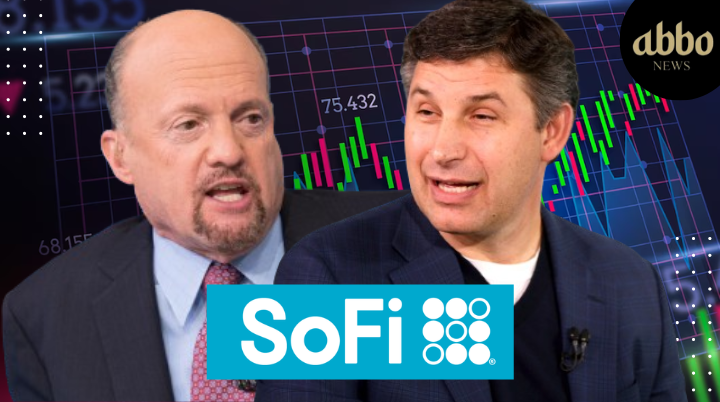Introduction
Apple Inc., one of the most powerful technology giants in the world, has an interesting and exciting AAPL stock split history that dramatically influenced the investors and the market at large. There is no doubt, that these AAPL stock splits revolutionized how the stock of the company behaves but more importantly, were the markers of the company’s growth. To better understand Apple’s stock split history, let’s go from 1980 when Apple had its groundbreaking initial public offering, to the day giving insights into the stock split history of AAPL.
The Years
Initial Public Offering (IPO):
Apple went public on December 12, 1980, with its IPO price set at $22 per share.
First Stock Split (June 16, 1987):
Apple executed its first stock split, a 2-for-1 split. This means that for every share owned before the split, shareholders received an additional share.
Second Stock Split (June 21, 2000):
Amidst the dot-com boom, Apple implemented another 2-for-1 stock split. This split aimed to make shares more accessible to investors.
Third Stock Split (February 28, 2005):
Apple again announced a 2-for-1 stock split, following a period of strong growth and increasing investor interest.
Fourth Stock Split (June 9, 2014):
Continuing its tradition, Apple executed another 7-for-1 stock split. This was a significant split, resulting in shareholders receiving seven shares for every share they owned before the split. This was done to bring Apple’s stock price down to a more affordable level for individual investors.
Fifth Stock Split (August 31, 2020):
In a move to further enhance accessibility for investors and potentially boost liquidity, Apple implemented a 4-for-1 stock split. This split made each existing shareholder receive three additional shares for every share held, effectively dividing the price per share by four.
The divisions mentioned would have transformed an initial purchase of 100 shares before the first split into 22,400 shares. Consequently, someone who acquired 100 shares at the initial public offering price of $22 and retained them would now witness their initial investment of $2,200 grow into a holding valued at over $4.2 million today.
Each of these stock splits has played a vital role in adjusting Apple’s stock price, making it more attractive to a wider range of investors and increasing liquidity and trading activity. While stock splits do not alter the important value of the company, they often reflect management’s confidence in its future growth prospects. Despite not fundamentally increasing the value of Apple’s shares, these splits divided existing shares into smaller portions, facilitating trading on the options market and lowering their prices. The fundamental valuation of the company and investor’s stakes remained unaffected throughout this process. Apple’s history of successful stock splits is a testament to its consistent growth and innovation in the technology sector, launching itself as a key player in the market.
Nowadays, many brokerage firms facilitate the purchase and sale of fractional shares, enabling retail investors to invest in companies regardless of their high share prices. Consequently, the significance of stock splits has diminished, although they still tend to garner substantial media attention and attract retail investors who prefer stocks with lower, double-digit prices over those with higher, triple-digit prices.
Is it possible for Apple to conduct a stock split soon, considering its current trading price of approximately $173 per share?
Apple’s Next Stock Split Could Be Several Years Away
When Apple announced its 4 for 1 split on July 30 2020 the stock was priced at $385. In contrast back, on April 23 2014 during a 7 for 1 split announcement, the stock traded at $525.
Given these two instances, it seems unlikely for Apple to go for a stock split at its price of around $200 per share. Also, it has only been three and a half years since the last split took place. Looking back historically the shortest time between Apple’s stock splits has been five years (from 2000 to 2005). Therefore, it might be some time before Apple’s board approves another stock split. Understanding AAPLs history of stock splits offers insights, into the company’s decisions and how they influence investor sentiment.
The Stock Split by Apple Highlights the Flaws of the Dow
The recent changes to the Dow Jones Industrial Average are not uncommon. This index, comprising 30 prominent US stocks, has witnessed frequent rotations of companies over its 135-year existence. However, the catalyst for this recent rebalancing was rather unique: Apple’s four-for-one stock split, executed at the end of August. According to Fisher Investments, delving into the reasons behind Apple’s corporate action triggering this adjustment and others illustrates why the Dow is deemed a poorly structured index and an ineffective gauge for portfolio performance.
Apple’s stock split did not alter its weighting in indices such as the S&P 500 or MSCI World Index, which are based on market capitalization, the total value of all outstanding shares. This is logical because a stock split does not impact the company’s market capitalization, it merely divides that market value among a greater number of shares. While the number of shares owned by individual investors changes, the total value of those shares remains constant. In contrast, the Dow does not assign weights to its constituents based on market size, instead, it relies on their share prices. Before Apple’s split, its share price of $503 as of August 24 positioned it as the largest constituent in the Dow. However, following the split and subsequent reshuffling, Apple’s position shifted to the middle of the pack, significantly diminishing its influence on the index’s performance although its impact on cap-weighted indices remained unaffected. Fisher Investments deems the concluding strategy more relevant for investors, as portfolio compositions naturally adhere to market capitalization weighting. Consequently, the performance of an investor’s portfolio hinges on the allocation of funds to each company, irrespective of individual share prices.
However, the primary reason behind the reshuffling was to reduce Apple’s influence, consequently decreasing the weight of the Tech sector as a whole within the Dow. A specialist at S&P Dow Jones Indices approximated that the division resulted in a decrease in the Tech sector’s price influence within the index, reducing it from 28% to 20%. In comparison, the Tech sector constitutes approximately 28% of the S&P 500 on a market capitalization weighted basis. To address this imbalance, Salesforce was added to the index, partially offsetting Apple’s split with its $208 share price as of August 24. Additionally, three companies with negative year-to-date returns (Exxon, Raytheon, and Pfizer) were removed, while Honeywell and Amgen, which have higher share prices, were included. We refrain from expressing opinions on whether these companies belong in the Dow, and generally, we do not consider index additions or deletions significant. Research conducted by Fisher Investments indicates that index changes do not substantially impact returns.
S&P Dow Jones Indices rationale behind the addition of Salesforce, Amgen, and Honeywell sheds light on the limitations of the Dow: According to the official statement, these additions aim to incorporate “new types of businesses that better reflect the American economy.”
The criteria used to select companies for addition to the index provide additional evidence of its flawed nature. Instead of focusing on factors like size, profitability, or other measurable metrics, the selection is primarily based on the reputation of the firms, along with the index provider’s evaluation of growth potential and investor appeal. Such criteria appear subjective and lack concrete quantifiability from our perspective.
Apple faces numerous short-term obstacles
Apple’s market value is nearing $2.9 trillion, positioning it as one of the world’s top two valuable companies, alongside Microsoft. (Microsoft briefly surpassed Apple to claim the top spot on Thursday.) Further expanding its market capitalization may prove challenging for Apple as its revenue and earnings growth begin to slow down.
Experts anticipate that Apple will experience a modest 4% increase in revenue and an 8% increase in earnings for its fiscal year 2024, which concludes in September. This forecast is attributed to a slowdown in iPhone sales. In fiscal year 2023, iPhone sales declined by 2%, primarily attributed to the completion of the 5G upgrade cycle and economic difficulties in China. Nevertheless, the flagship smartphone remained responsible for more than half of the company’s overall revenue.
In the narrative of AAPL stock split chronicles, the dwindling sales of Macs in the aftermath of the contagion, coupled with currency challenges, have compounded the deceleration. Apple is striving to counteract this strain by broadening its services ecosystem, boasting over a billion paid subscriptions, a noteworthy facet in AAPL stock split annals. Nevertheless, its heavy reliance on the iPhone remains pronounced, a fundamental aspect in grasping AAPL stock split history. Additionally, A recent legal conflict over patents has caused disruptions in Apple Watch sales in the United States, adding further complexity to the narrative surrounding AAPL’s stock split. Additionally, the substantial $3,500 price attached to the new Vision Pro headphones, released in early February, may limit its broad appeal, thereby affecting the AAPL stock split trajectory.
Given the array of obstacles confronting Apple, its stock appears less than appealing, priced at 28 times projected earnings. Additionally, its modest dividend yield of 0.5% is unlikely to allure serious income-oriented investors, particularly amidst an environment where CDs and Treasuries provide risk-free yields surpassing 5%.
Investors should prioritize assessing Apple’s cash flow and share buyback programs rather than speculating about Apple’s potential future stock splits, investors would be better served by directing their attention toward the company’s cash flow and buyback initiatives as it confronts short-term challenges. Over the previous 12 months, Apple amassed $99.6 billion in free cash flow (FCF), dealing $77.6 billion of this sum towards buybacks and $15 billion towards dividends. Notably, it has repurchased 38% of its outstanding shares over the last decade and has consistently increased its dividend annually since reinstating payments in 2012.These actions demonstrate Apple’s commitment to its shareholders, prioritizing the return of excess cash rather than engaging in risky diversification through ill-advised investments or acquisitions. This stance could explain why Warren Buffett’s Berkshire Hathaway has invested almost half of its stock portfolio in Apple.
Despite holding $162 billion in cash and marketable securities in its latest quarter, Apple maintains ample flexibility for significant acquisitions to broaden its ecosystem. Additionally, this substantial cash reserve positions Apple as an attractive haven investment during economic downturns. Top of Form
While Apple’s potential for upward movement may be constrained this year, its fundamental strengths are poised to mitigate potential losses until the onset of its next growth phase. Consequently, this could present an opportune moment to accumulate shares of the company, especially as pessimistic sentiments regarding its short-term catalysts prevail among bearish investors.
Conclusion
AAPL stock split history reflects its evolution from a pioneering computer company to a global technology giant. These splits have been strategic moves aimed at making its shares more accessible to investors while underscoring the company’s confidence in its future growth prospects. As Apple continues to innovate and expand its product offerings, its stock split history is a testament to its enduring success in the technology industry.
Junaid Altaf is a content writer and journalist who loves exploring stocks. He Analyzes stocks of different companies to make the news simple and interesting for everyone to understand.










